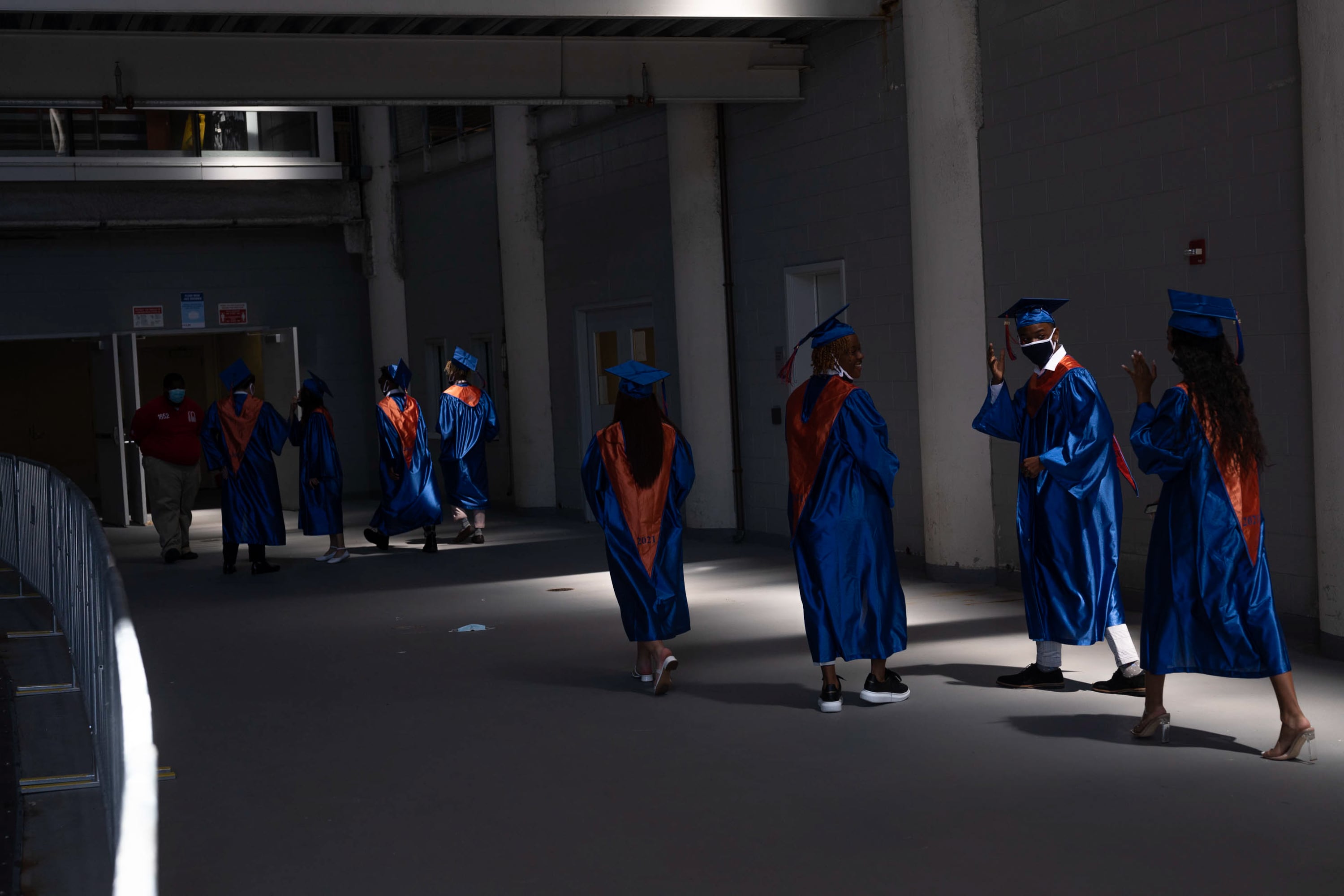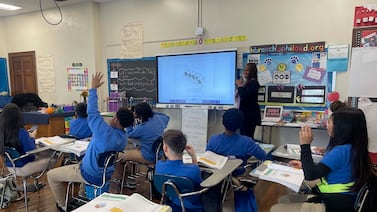Sign up for Chalkbeat Chicago’s free daily newsletter to keep up with the latest news on Chicago Public Schools.
Illinois high school juniors last school year scored lower on the ACT college entrance exam than their peers did a decade ago — mirroring national downward trends in high school achievement.
The average ACT composite score unveiled Thursday for juniors who took the test in the spring was a 18.8 out of a possible 36. Chicago Public Schools reported a 17.1 average composite score, but composite scores for other districts were not released. A decade ago, Illinois juniors posted a 20.5 average composite score and CPS juniors then had an average composite score of 18.2.
Illinois tests juniors on a school day each spring using a college entrance exam, such as the ACT or SAT, to fulfill an accountability mandate outlined in federal law starting in 2002. From 2002 to 2016, Illinois used the ACT, then switched to the SAT, which it used from 2017 to 2024. This past school year, the state returned to using the ACT.
The average composite score on the SAT declined between 2017 and 2024, when it was 950. A comparison chart on ACT’s website says an SAT score of 950 equates to a 17 on the ACT.
There’s also been little progress in reducing the rates at which Illinois high school students are missing school. In Chicago, the rates of absenteeism actually went up last school year.
At the same time, Illinois’ four-year high school graduation rate has reached a record high 89%, with Chicago posting an 82.5% rate.
Last fall, State Superintendent Tony Sanders flagged the disconnect between steady standardized test declines at high school level and the rise in graduation rates as a concern. But this week, he said he’s not worried.
“Our data suggests that our students are faring really well,” Sanders said. “They’re graduating because they’re ready to graduate.”
State and Chicago officials both highlighted growing numbers of students taking Advanced Placement, International Baccalaureate, and dual credit courses — all of which can translate to college credit if students successfully pass those courses. However, pass rates for those courses are not included in the data.
CPS Chief of Teaching and Learning Nicole Milberg called rising graduation rates a “bright spot” for CPS and noted that the rate has more than doubled since 2001. She attributed that to the district making preparation for postsecondary education a major focus.
Chicago officials also said more than 56% of district graduates earned early college or career credentials and district data indicates more graduates are making it to and through college.
“We are seeing really strong data in terms of college persistence, which is showing us something about our students being prepared and ready for college,” Milberg said.
Still, Milberg said the latest ACT scores are concerning and something district officials are trying to better understand.
The last time Illinois high school juniors were required to take the ACT in 2016, they posted average scores between 20 and 21 out of a possible 36. For a decade prior, average scores hovered around 20 as well. Chicago’s average ACT scores climbed from 16.3 to 18.4 between 2002 and 2016. New data does not include average composite scores for districts and a spokesperson for the Illinois State Board of Education said they will no longer calculate or publish them because federal law does not require it. Data does include a breakdown of average scores by subject.
Rae Clementz, the state’s executive director of data, accountability & assessment, said not to compare the ACT scores of a decade ago to now because it’s “just a very different assessment.”
But officials with ACT said although some changes have been made to the test that rolled out in 2025, including fewer questions, the scores can still be compared over time. Generally, they said, an 18 in 2025 means what it did in 2015.
Scores on both college entrance exams have declined in other states where all students are taking the SAT or the ACT during the school day for accountability purposes under federal law.
Many researchers and observers point to the pandemic as a core reason for the decline. The high school juniors who took the ACT last spring were in middle school when the pandemic shuttered schools and sent learning online.
Some point to lingering challenges with attendance as a core factor for the declines.
Recent research on Illinois and Chicago students found a strong link between how often students miss school and their test scores. A report released earlier this month by the Illinois Workforce and Education Research Collaborative, or iWERC, found test scores decline each additional day a student misses school.
Earlier this year, Chalkbeat and WBEZ reported a quarter of all CPS high schoolers — nearly 25,000 students — missed at least 35 days of school during the 2023-24 school year. That’s twice the number of days the state deems troublesome enough to flag a student as chronically absent. Data shared by IWERC at that time showed the more days a high school student missed, the lower their SAT scores.
New data from the state for the 2024-25 school year indicates that chronic absenteeism — defined as missing 10% of school days or around 18 in a given year — increased in the high school grades in CPS and remained relatively flat across the state. The rates declined for elementary school students both at CPS and across the state, indicating improvement in attendance among younger children.
Sanders said many schools are working hard to address absenteeism, but it remains higher than pre-pandemic levels, in line with national trends. He said the state will soon be launching a “chronic absence task force” made up of teachers, school leaders, social workers, and advocates.
“This is still going to have to be a focus for Illinois schools,” he said.
Jessica Handy, executive director of the advocacy and policy organization Stand for Children, said high schools need to focus on improving attendance, but also should work on keeping students engaged once they do show up.
“Cell phones are another thing that has changed a lot,” Handy said. “The largest barrier to kids learning is that they’re distracted by those phones all day long.”
Illinois Gov. JB Pritzker pushed for banning cell phones during instructional time earlier this year, but the proposed bill did not pass. A new study supported by the National Bureau of Economic research found cell phone bans in schools had a positive impact on student learning.
Becky Vevea is the bureau chief for Chalkbeat Chicago. Contact Becky at bvevea@chalkbeat.org.







